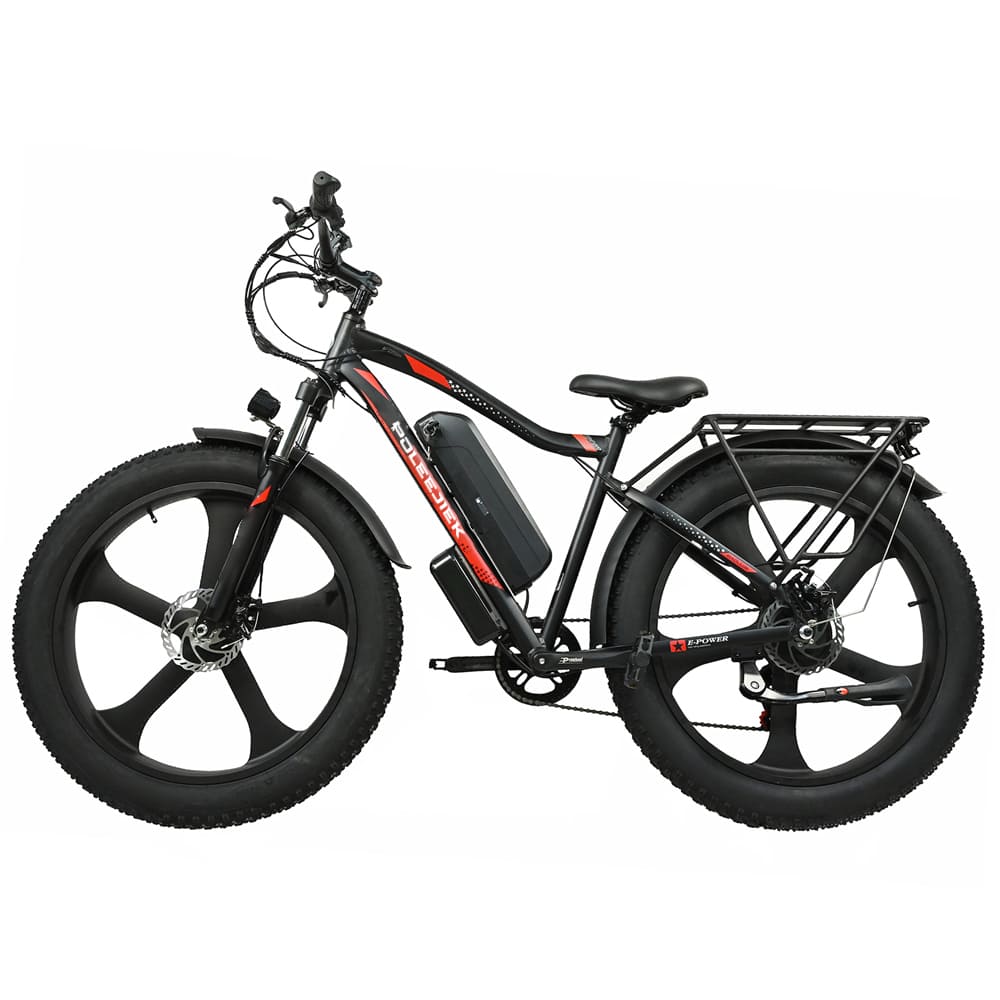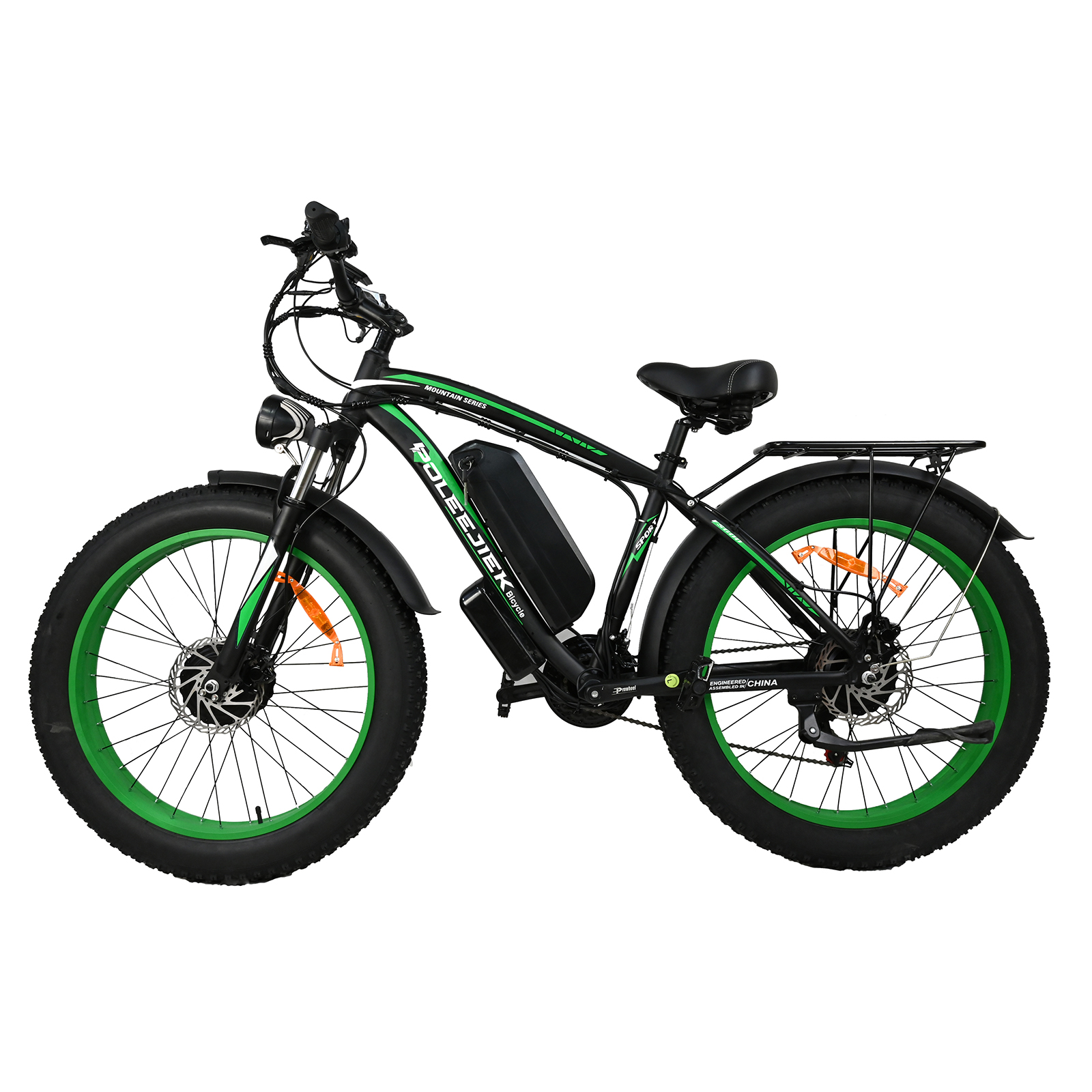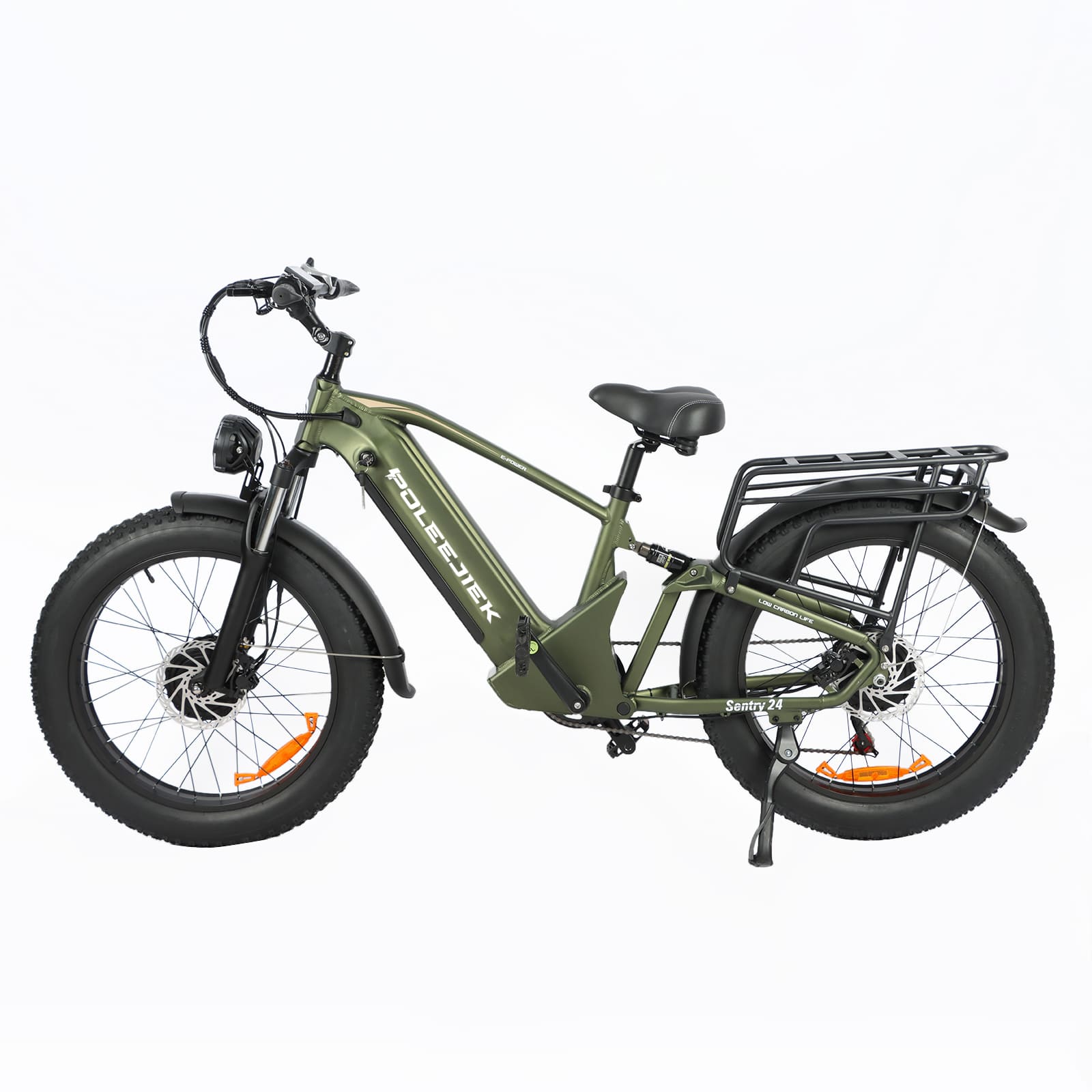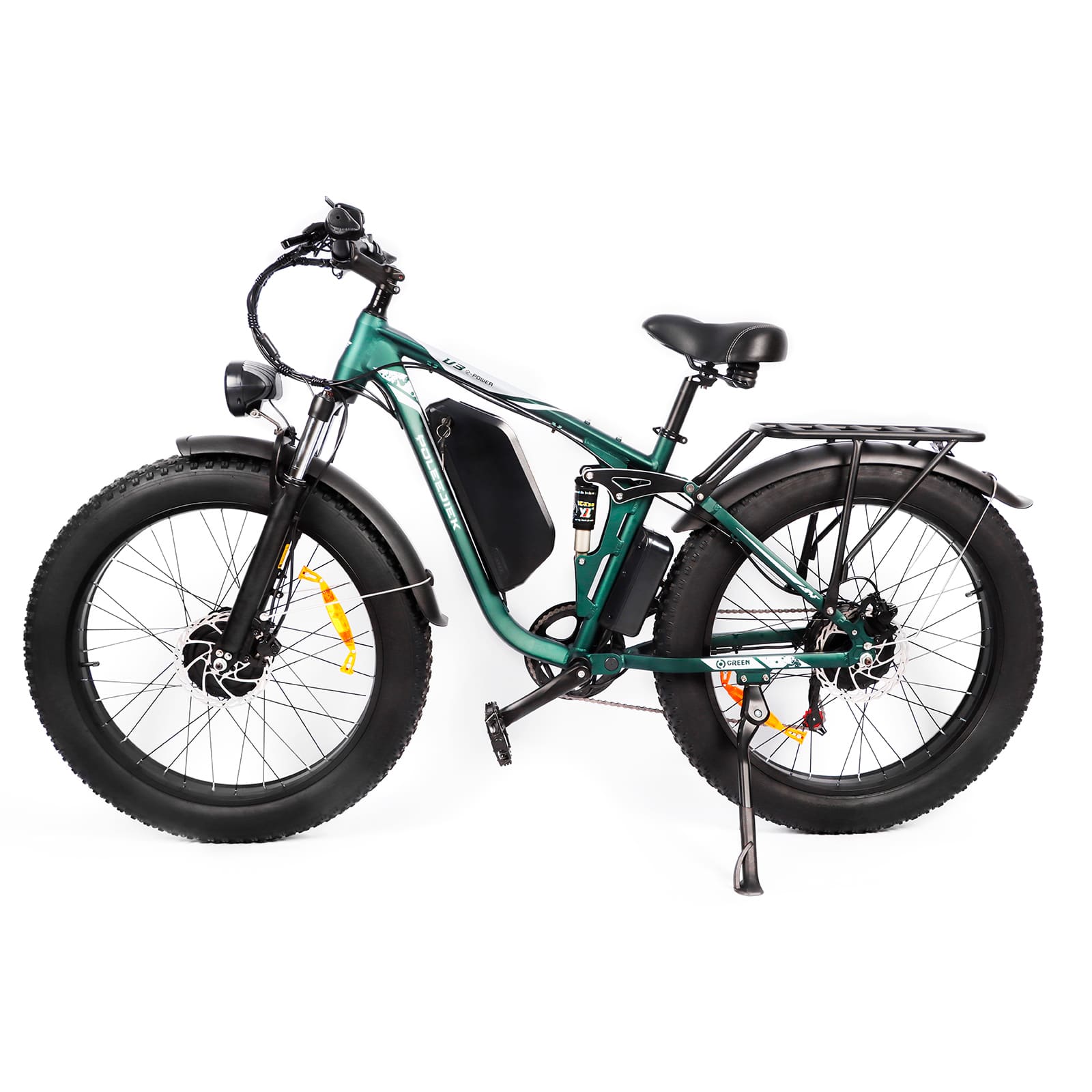Mid Drive Ebike vs. Hub Motor: B2B Purchaser’s Ultimate Guide to Profit & Maintenance
As a B2B purchaser, product manager, or distributor in the e-bike space, your inbox is filled with B2C customer feedback. They obsess over "ride feel," "torque," and "aesthetics."
But your reality is different. Your B2B challenges are far more critical. While your customers debate the experience of a mid drive ebike, you must solve the business equation:
- Which electric bikes motor technology will deliver sustainable ebike profit margins?
- Which motor will turn your service department into a profit center, and which will turn it into an after-sales nightmare of warranty claims and angry customers?
This is the central dilemma for any B2B e-bike operation. The single biggest mistake a purchaser can make is treating all e-bike motors as equal commodities. They are not. A hub motor and a mid-drive motor represent two fundamentally different business models.
One is a high-volume, low-margin "disposable" model. The other is a high-margin, "premium + service" model.
Choosing the wrong one can lock your business into a permanent price war, erode your brand reputation, and bloat your inventory with non-serviceable parts.
As a dedicated B2B partner and ebike supplier, Poleejiek is focused on your long-term profitability. This comprehensive guide moves past the B2C talking points and provides a direct B2B analysis of these two technologies. We will dissect the profit potential, long-term maintenance costs, and supply chain realities to demonstrate why a strategic partnership on mid drive ebike solutions is the key to building a resilient, high-margin e-bike business.
The Basics (B2B Perspective): How Do Electric Bikes Work?
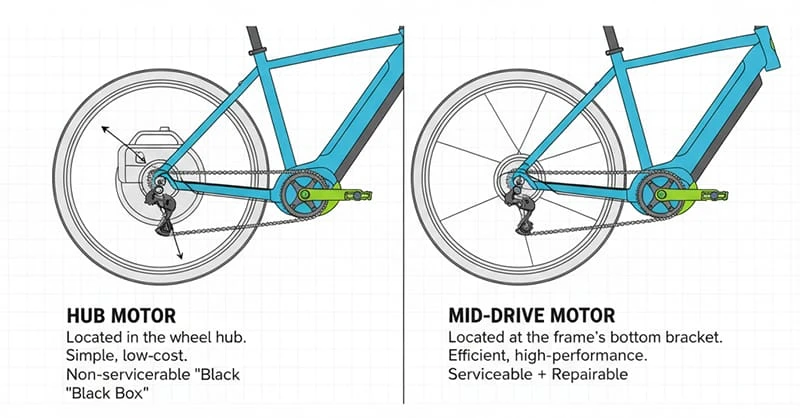
Before we analyze the profit and loss, we must establish a clear technical baseline. From a B2B perspective, how do electric bikes work?
At its core, an e-bike system (or "e-kit") consists of three items: a battery, a controller (the brain), and the motor. The location of that motor dictates everything else: frame design, ride characteristics, supply chain, and—most importantly—your after-sales service model.
There are only two primary locations for that motor: in the center of the wheel (hub-drive) or in the center of the frame (mid-drive).
Hub Motors: The "High-Volume, Low-Margin" Entry Point
How It Works:
A hub motor, as the name implies, is integrated directly into the hub of the front or rear wheel. The motor is the hub. It applies rotational force (torque) directly to the wheel it's built into.
- Geared Hub Motors: Most common. They use a system of internal planetary gears to reduce the speed of a high-RPM motor. This makes them compact, lightweight, and efficient at providing good torque for acceleration.
- Direct-Drive Hub Motors: Less common now. These have no gears. The motor's axle is the axle of the wheel. They are simpler (fewer moving parts) but are larger, heavier, and typically offer less starting torque.
The B2B Advantages:
For B2B purchasers, the appeal of the hub motor is simple: low procurement cost.
- Low Cost: The motors themselves are less mechanically complex than mid-drives, making them cheaper to manufacture.
- Simple Integration: They do not require a specialized or proprietary frame design. A factory can take almost any standard bicycle frame, build a wheel with a hub motor, and create an e-bike. This is why the market is flooded with budget electric bikes and electric cruiser bikes using this system.
- Good for Entry-Level: This model is perfect for "budget" or "convenience" market segments like beach cruisers, simple folding bikes, or basic commuters where B2C customers are highly price-sensitive.
The B2B Disadvantages (The "Black Box" Problem):
This is where B2B pain point #1 (ebike maintenance) emerges. A hub motor is a sealed "black box."
When a component inside that sealed motor fails—a sensor, a nylon gear, a bearing—what is your service procedure? For 99% of hub motors on the market, there isn't one. The entire motor-wheel assembly is treated as a single, disposable part.
Your "repair" process becomes:
- Customer has a problem.
- Your technician diagnoses that the motor is faulty.
- You cannot open or repair the motor.
- You must order and install an entire new wheel (motor, rim, spokes).
This "replacement model" is a margin-killer. You face high-cost warranty claims, a low-skill/low-margin service department, and massive inventory bloat. You don't just stock "motors"; you must stock front wheels, rear wheels, 26-inch, 27.5-inch, 29-inch, and 700c versions, all for different models. This is a path to unprofitability.
Mid-Drive Ebike: The "High-Profit" Professional Choice
How It Works:
A mid drive electric bike places the motor at the bottom bracket—the strongest part of the frame, right where the pedals connect.
Crucially, the motor applies torque to the crankset, not the wheel. This means the motor's power is delivered through the bike's own drivetrain: the chain and the rear gears (cassette).
This is the single most important technical difference. A mid-drive motor leverages the bike's existing gears.
The B2B Advantages:
This design creates the "premium experience" that justifies a higher price point (addressing B2B pain point #3, ebike profit margin).
- High Efficiency & Performance: When a rider shifts to a low gear to climb a steep hill, the motor also benefits from that low gear. It can spin at its optimal RPM range, delivering massive torque without overheating. A hub motor, by contrast, is a single-speed system. On that same hill, it will slow down, lose efficiency, and can overheat.
- Natural Ride Feel: Mid-drives typically use sophisticated torque sensors. They measure how hard the rider is pushing on the pedals and amplify that effort seamlessly. This is the "bionic legs" feeling customers rave about. Most hub motors use simpler cadence sensors (is the rider pedaling, yes/no?), which feels more like an "on/off" switch.
- The Market Standard: Because of this efficiency and ride feel, mid-drives are the non-negotiable standard for any performance category. You cannot be a serious player in the ebike mountain bike or full suspension ebike markets without a premium mid-drive offering.
The B2B Disadvantage (The Perceived Maintenance Nightmare):
Here is the fear that stops many B2B purchasers: "This motor is more complex. It's integrated into the frame. If it breaks, it will be a maintenance nightmare."
And this fear is 100% valid... if your ebike supplier fails you.
If your supplier treats a mid-drive like a "black box" (just as they do with hub motors), then yes, it's a disaster. A failed mid-drive motor can cost $800-$1,200 to replace, wiping out your entire margin on that bike.
But this complexity is also its greatest strength, if you have a partner who embraces a "serviceable" model.
Profit & Positioning (Pain Point #3): Why a Mid-Drive is Your "Profit Engine"
Let's be blunt: the B2B e-bike market is not just about moving units. It's about building a sustainable, profitable brand. The hub motor model actively works against this goal.
Escaping the Commodity Price War
The entry-level hub motor market is a red sea of commoditization. It has been dragged into a brutal price war, flooded by countless factories producing generic, low-cost e-bikes.
If your primary offering is a hub-drive e-bike, your only sales tool is price. You are in a race to the bottom against competitors who will always be willing to shave another 5% off their margins.
As a B2B distributor, you cannot build a brand, a loyal customer base, or a healthy business in this environment. You are simply a middleman for a disposable product.
Building a Professional Brand on Performance
Selling mid drive ebikes is a fundamentally different business. You are no longer selling a "bicycle with a motor." You are selling advanced technology, superior performance, and a premium experience.
This shift does two things:
- Attracts Better Customers: It attracts a higher-quality B2C customer—the enthusiast, the serious commuter, the mountain biker. These customers are less price-sensitive and more focused on performance, quality, and—critically—long-term service.
- Establishes Your Authority: It positions your brand as an expert. You are not just a "box shifter"; you are a technical specialist providing high-performance machines. This builds a reputation that low-cost competitors can never touch.
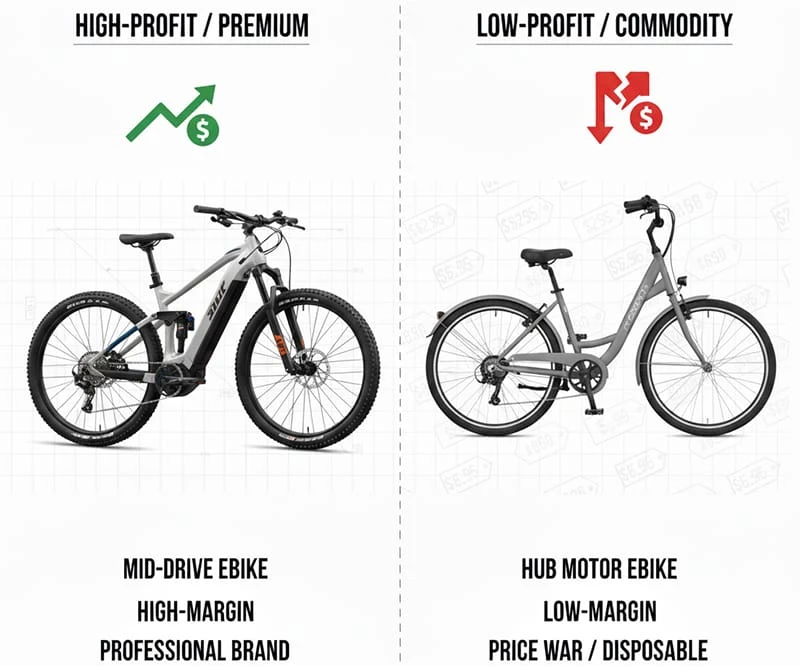
Poleejiek’s Premium Pricing and Profit Strategy
We designed the Poleejiek ebike mid-drive lineup with a "Partner-First" pricing structure. We are not interested in being the cheapest ebike supplier; we are interested in being your most profitable one.
Our premium mid-drive models, such as the Poleejiek DM-01 Torque Series, are built on a clear B2B strategy:
- Protected Margins: We aggressively enforce MAP (Minimum Advertised Price) policies to prevent online discounting wars. This protects your showroom and your brand value.
- Clear Profit Channel: Our B2B pricing is transparently structured to ensure our distributors and dealers retain a healthy, sustainable ebike profit margin of 30-45%.
- Upsell & Cross-Sell: A high-performance full suspension ebike is a gateway. Your customers will also buy premium accessories, apparel, and service plans, further increasing the lifetime value of every sale.
You cannot achieve this with a low-cost hub motor strategy.
Maintenance & After-Sales (Pain Point #1): How Poleejiek Turns the "Maintenance Nightmare" into "Service Revenue"
This is the most important section of this guide. This is where Poleejiek’s B2B partnership model truly separates from typical suppliers.
We hear the B2B fear every day: "This expensive $1,000 mid-drive motor just failed. The bike is out of warranty. My customer is furious, and I'm stuck with a massive bill. I don't have the tools or parts to fix it!"
This scenario is the direct result of a failed supplier relationship.
The "Replacement" Model (Hub) vs. The "Repair" Model (Mid-Drive)
Let's summarize the two service models again:
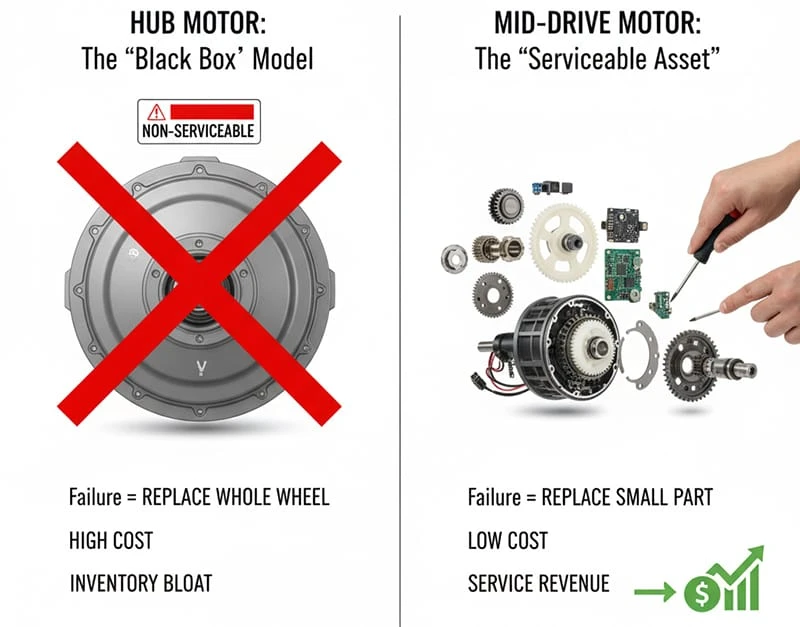
| Feature | Hub Motor Model (The "Black Box") | Poleejiek Mid-Drive Model (The "Serviceable Asset") |
|---|---|---|
| Failure Mode | Internal gear or sensor fails. | A single internal part fails (e.g., nylon gear, torque sensor). |
| Supplier Solution | "Replace the entire wheel assembly." | "Here is the $50 part and the manual to replace it." |
| Your Cost | High: $150 - $250 (cost of new wheel). | Low: $20 - $100 (cost of small part). |
| Your Revenue | Zero. You cannot charge for a warranty claim. | High. You can charge $150+ for a "Mid-Drive Service." |
| Your Business | You created a Cost Center. | You created a Profit Center. |
A mid drive electric bike is a aserviceable asset, just like a car's engine. A hub motor is a disposable part, like a broken printer.
Poleejiek's B2B After-Sales Solution (Our Commitment)
We believe that ebike maintenance is not a problem—it's your next revenue stream. To make this a reality, we don't just ship you bikes. We provide a complete after-sales ecosystem.
When you partner with Poleejiek, you gain access to our "Certified B2B Partner" support structure:

1. Advanced Diagnostic Tools
Your technician's worst enemy is guesswork. We eliminate it. We provide B2B partners with our proprietary electric bikes motor diagnostic software.
- How it works: Your technician connects the e-bike to a laptop. The software runs a full system diagnostic in under 5 minutes.
- The Result: It pinpoints the exact point of failure (e.g., "Error 21: Torque Sensor Drift" or "Error 30: Controller Fault"). No more replacing parts hoping to find the problem.
2. 100% Component-Level Parts Supply
This is our core promise. We never require you to replace an entire motor. We stock and supply every single internal component for our mid-drive systems.
-
Problem: A rider damaged the internal nylon reduction gears.
- Bad Supplier: "You must buy a new $900 motor."
- Poleejiek: "We will ship you the $45 gear set today."
-
Problem: The torque sensor is water-damaged from pressure washing.
- Bad Supplier: "Motor is non-serviceable. Buy a new one."
- Poleejiek: "Here is the $110 replacement torque sensor and the O-ring kit."
This strategy transforms your business. It slashes your warranty costs and empowers you to perform profitable, high-margin repairs for out-of-warranty customers.
3. Comprehensive Training & Technical Manuals
A parts supply is useless if your team lacks the confidence to use it. We invest heavily in empowering your technicians.
- Video Library: Our B2B Partner Portal gives you access to a full library of high-definition, step-by-step repair videos for every procedure.
- Exploded-View Manuals: We provide detailed technical manuals and schematics for every Poleejiek ebike model.
- Direct Support: Your team gets a direct line to our engineering support staff, not a call center.
This is how we turn your biggest fear into your strongest competitive advantage. You will be one of the few distributors in your region capable of professionally servicing high-performance e-bikes, building immense trust with your B2C customers.
Conclusion: B2B Purchasers, Don't Just Buy a Product. Buy a "Serviceable" Profit Model.
The choice between a hub motor and a mid drive ebike is not a technical choice. It is a business model choice.
When you source cheap, hub-drive e-bikes, you are sourcing a "disposable" product. You are committing your business to a high-volume, low-margin price war with no brand loyalty and a high-cost after-sales burden.
When you partner with Poleejiek on our mid drive ebike ecosystem, you are sourcing a "serviceable" and sustainable profit model.
You are investing in a high-margin, premium product that builds your brand's reputation. More importantly, you are investing in a partnership that provides the tools, parts, and training to create an entirely new, high-margin revenue stream from service.
Don't just buy a product. Buy a business model that is built to last.
[Call to Action (CTA)]
Ready to upgrade your product line and escape the low-margin price war?
Your competitors are stuck replacing entire wheels. It's time for you to start repairing motors.
Contact the Poleejiek B2B team today. Request our exclusive Mid-Drive Maintenance Manual and our B2B Distributor Profit Model. See how we can help you dominate the high-performance ebike mountain bike market and build a business that profits from day one and year five.



